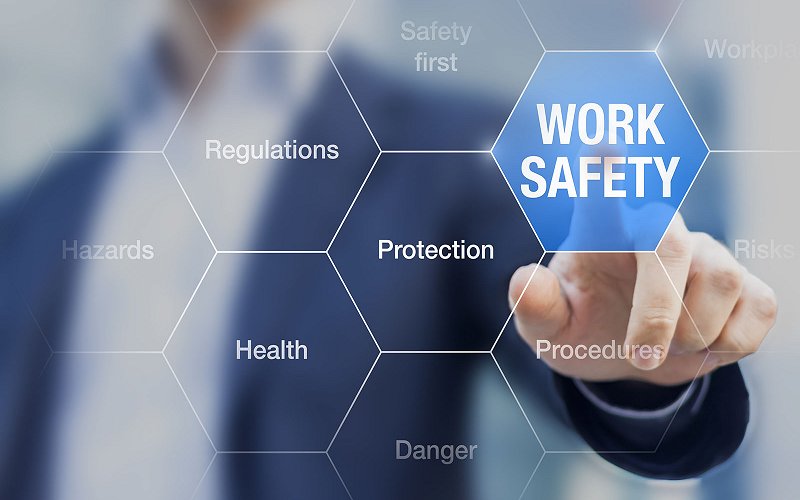Introduction
Dear all,
As Singapore’s economy restarts after the COVID-19 pandemic slump, there has been a spike in workplace safety lapses. There are already 31 work-related deaths reported in the first seven months of 2022, as compared to 30 workplace deaths in the whole of 2020. Consequently, the Ministry of Manpower has ramped up its enforcement efforts — e.g., by issuing more fines and stop-work orders to companies after detecting unsafe practices during inspections. Further, Member of Parliament Melvin Yong has recently stressed in Parliament that “workplace safety and health (WSH) is a collective responsibility of both employers and workers”. Senior Minister of State for Manpower Zaqy Mohamad has also emphasised that CEOs and directors will be prosecuted if they are culpable for workplace safety and health lapses.
What then must employers and their HR departments do amid this rise in workplace safety and health lapses?
The employer owes the employee various duties in relation to health and safety at work. These duties emanate either from common law or from the statute. The Workplace Safety and Health Act (“WSHA”) is enacted to govern these duties, and covers all workplaces.
In view of the WSHA, Human Resource Practitioners or Safety Coordinators/Officers who are in-charge of workplace safety and health would need to acquire the knowledge and skills to ensure compliance with the legislation. Failing which, employers may be made liable for breaches of the Act, and this would extend to both criminal and civil liabilities.
Therefore, this workshop will provide participants with a comprehensive understanding of the legal requirements of the WSHA, and thereby enable them to fulfil their legal duties by properly preventing and managing workplace accidents. At the end of this workshop, participants can be assured that they will be more competent in their understanding of the WSHA and its practical applications.
Qualified safety officers who are familiar with the practical aspects of workplace safety and health may wish to note that this workshop focuses on the legal aspects of workplace safety and health.
Learning Objectives
- Know what are the workplaces covered under the Act
- Underline the general standard covered under the Act
- Know who are the persons who owe duties under the Act.
- List the type of liability under the Act.
- List the specific duties under the Act.
- Know what are the orders and other matters under Act.
- List the offences and penalty under the Act.
- Underline the regulations under the Act.
- Know the type of insurance to mitigate the risk for employers for accidents.
- Know whether the employee should proceed with WICA or tort suit under common law.
Course Outline
A competent Safety Officer must have the skills and knowledge in the following:
1. Background and Purpose of WSHA
- WSHA versus Factories Act
2. Know what are the workplaces covered under the WSHA
- Coverage under the previous Factories Act and the present WSHA
- Definition and differentiation of workplace and factory.
3. Underline the general standard covered under the Act
- Differentiation in the standard of care under the Factories Act and WSHA.
- Know the definition of reasonable practicality.
- The onus of proof in which the prosecution has to establish.
- Codes of practice for workplace safety.
- Case laws on reasonable practicality
4. Know who are the persons who owe duties under the Act
- Definition of employers.
- Definition of occupiers.
- Definition of principals.
- Definition of employees.
- Definition of self-employed persons.
- Definition of manufacturers and suppliers
- Definition of installers and erector of machinery
- The person is committing an offence under two different capacities but arising out of the same set of facts.
- Duty or liability imposed by the Act.
5. Know what are the types of liability under the Act
- Civil liability versus criminal liability under the Act.
- Liability under regulations.
6. Know the specific duties under the Act
- Duties of the occupier.
- Duties of the employer.
- Duties to employees.
- Duties of principals.
- Duties of self-employed persons.
- Duties of the person at work.
- Duties of Manufacturers and Suppliers.
- Duties to Others.
- Defences
7. Orders and other matters
- Common law duty of care and breach of duty.
- Commissioner to issue a remedial order or a stop work order.
- Orders to be imposed under what circumstances and to whom.
8. Know the offences and penalty under the Act
- Criminal liability faced by the organisation.
- Criminal liability faced by an officer of the corporate.
- Contrast the penalties under the Factories Act and WSHA.
- Vicariously liability
9. Know what are the regulations
- Workplace Safety and Health (General Provisions) Regulations
- Workplace and Safety and Health (First Aid) Regulations.
- Workplace and Safety and Health (Incident Reporting) Regulations.
- Workplace and Safety and Health (Construction) Regulations.
- Risk management policies.
10. Coverage of insurance for employees
- Statutory requirements or employer’s discretion and who are exempted.
- WICA Insurance premium on a single company or group of companies.
- Personal accident insurance.
- Medical insurance.
Methodologies
Lecture and case study.
Who Should Attend
HR Practitioners and Safety Officers
Workshop Registration
Please visit this page to register.




